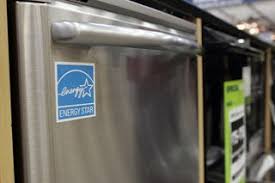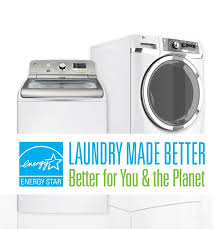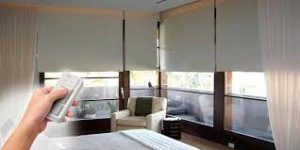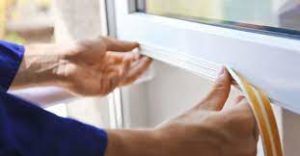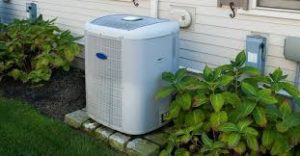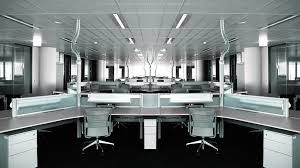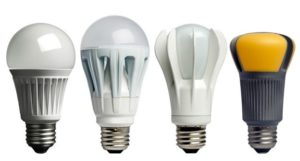Energy Saving Tips
At Great American Gas and Electric (“GAGE”), we want to make our customers aware of their energy usage and how they can save money. Just as communities look for ways to conserve Earth’s precious resources and adopt more sustainable lifestyles, we want to help you find ways to lower your energy usage and improve your budget as well as the health and well-being of the environment.
Here are some tips to help you save energy and keep costs down during spring and summer when the weather begins to warm up and you are trying to keep your home cool. Visit our social media pages below for more tips!
If you haven’t already done so, conduct an energy audit to find out where you can save the most.
Energy Saving Tips
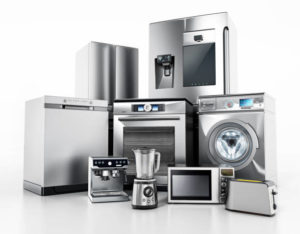
When buying an appliance, remember that it has two price tags:
- What you pay for it
- What you pay for the energy and/or water it uses
ENERGY STAR® qualified appliances incorporate advanced technologies that use 10-50% less energy and water than standard models. The money you save on your utility bills can more than make up for the cost of a more expensive but more efficient ENERGY STAR® model.
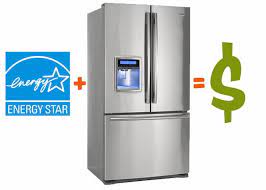
Refrigerator:
- Don’t set refrigerator and freezer temperatures too low. Your unit will work harder than it needs to.
- The recommended temperatures are 37 to 40 degrees for your refrigerator and 5 degrees for your freezer.
- Don’t allow frost to build up in your freezer. Frost build-up reduces the efficiency of your freezer. Look for a refrigerator with automatic moisture control. These have been manufactured to prevent moisture accumulation on the cabinet exterior eliminating the need for the addition of a heater.
- Make sure your refrigerator doors seal airtight. Cover liquids and wrap foods in your refrigerator. Uncovered foods emit moisture into the refrigerator and make the compressor work harder.
Dishwasher
- Use the air-dry setting on your dishwasher.
- Using the heat-dry setting can also heat the kitchen, causing the air conditioner to run more. Don’t use the “rinse hold” option on your dishwasher. It uses 3 to 7 gallons of hot water each time you use it.
- Make sure your dishwasher is full but not overloaded. This saves water and electricity.
Clothes Washer
- Wash clothes in cold water wherever possible.
- Only run clothes washers when fully loaded. This will save water in addition to electricity.
Clothes Dryer:
- To make the most efficient use of your dryer, dry the lighter clothing in separate loads from towels and other heavy materials.
- Dry loads back-to-back if possible but remember to clean the lint screen between each load. It helps move moisture away from clothes faster.
- Don’t over-dry your clothing. Use the cool-down cycle to allow the clothes to finish drying with the residual heat in the dryer.
- Consider air-drying your clothing on clothes racks or lines. Do not overfill the dryer and use the automatic setting.
PRACTICE ENERGY CONSERVATION
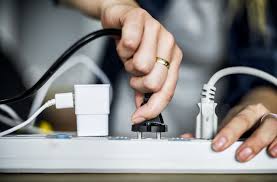
- Use energy at night or during off peak hours. Peak hours are usually between 4 pm and 6 pm when people typically get home from work or school.
- Get in the habit of turning off appliances like laptops, lamps, or fans, when no longer in use or leaving the room.
- Use Power Strips. When plugged into a wall outlet, electronic and other home office equipment can continue to consume electricity after it is turned off. Use power strips. Shutting off power at a power strip will eliminate this standby electricity consumption.
WINDOWS:
USE YOUR WINDOW COVERINGS TO KEEP OUT HEAT
- Install window coverings to prevent heat gain through your windows during the day.
KEEP HOT AIR FROM LEAKING IN INTO YOUR HOME
- Seal cracks and openings to prevent warm air from leaking into your home.
- Add caulk or weather stripping to seal air leaks around doors and windows.
- Keep curtains and drapes drawn during the day in the warm months to block out the sun’s heat. White blinds and/or draperies will also do a better job of reflecting the sunlight from your windows.
- During colder months, open south and west-facing blinds/draperies to let in radiant sunlight and take a load off your furnace.
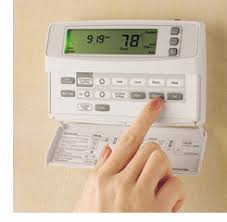
CONSIDER INSTALLING A PROGRAMMABLE THERMOSTAT
- Properly used, a programmable thermostat can save 10-20% of your energy use. Run your HVAC on automatic rather than running it continuously. In summer, set your thermostat as high as is comfortable.
- Try it at 78°F. Program your thermostat to raise the temperature during the day when you’re not home and cool the house down before you arrive home.
- Setting your thermostat at a lower temperature than desired does not make your home cool faster. In winter, set your thermostat to 68°F. Also, set it to cool down your house during the day and heat it back up before you get home.
OPERATE YOUR THERMOSTAT EFFICIENTLY
- Set your thermostat at a temperature you find comfortable and that provides humidity control, if needed. The smaller the difference between the indoor and outdoor temperatures, the lower your overall cooling bill will be.
- Keep your house warmer than normal when you are away, and lower the thermostat setting when you return home and need cooling. A programmable thermostat allows you to do this automatically and without sacrificing comfort.
- Avoid setting your thermostat at a colder setting than normal when you first turn on your air conditioner. It will not cool your home any faster and could result in excessive cooling and unnecessary expense.
- Avoid placing lamps or TV sets near your room air-conditioning thermostat. The thermostat senses heat from these appliances, which can cause the air conditioner to run longer than necessary.
KEEP YOUR COOLING SYSTEM RUNNING EFFICIENTLY
- For maximum energy affordability, schedule regular maintenance for your cooling equipment.
- Check air filters regularly and replace them at least once every three months as dirty filters make the system work harder than necessary.
- Ensure that furniture and other objects are not blocking the airflow through your registers.
- Washing the outside coils and clearing high grass and debris will prevent blockage of the air-flow.
- Outside air conditioning units, or condensers, should be shaded from direct sunlight.
- If your air conditioner is more than 15 years old, consider replacing it with a newer, more efficient model that can use up to 40% less energy than older models.
USE FANS AND VENTILATION STRATEGIES TO COOL YOUR HOME
- Use fans to remain cool instead of lowering your thermostat.
- Fans move the air and make the room feel four to six degrees cooler, and will use much less energy than the air conditioner.
- Turn off ceiling fans when you leave the room. Remember that fans cool people, not rooms, by creating a wind chill effect.
- When you shower or take a bath, use the bathroom fan to remove heat and humidity from your home.
- Don’t leave bathroom or kitchen ventilation fans running longer than necessary; they replace inside air with outside air.
- Your laundry room might also benefit from spot ventilation. Make sure bathroom and kitchen fans are vented to the outside (not just to the attic).
- Whole-house fans help keep your home cooler in summer by pulling cool air through your home and exhausting warm air through the attic.
DUCTS, VENTS, & OPENINGS
- Check your ducts for air leaks.
- Use heat approved tapes rather than cloth-backed duct tape to seal your ducts.
- Make sure radiators, baseboard heaters, warm-air registers, and A/C vents aren’t blocked by furniture or curtains.
- Keep the dampers on your fireplace closed when you are not using it.
CONSIDER A RANGE OF LIGHTING OPTIONS
- Consider lighting options that operate at cooler temperatures.
- If convenient, take advantage of daylight instead of artificial lighting, but avoid direct sunlight.
- Wash full loads of dishes and clothes for better efficiency.
CONSIDER USING ENERGY EFFICIENT BULBS
- Replace incandescent light bulbs with compact fluorescent lamps (CFLs), Halogen Incandescent bulbs or Light Emitting Diodes (LEDs).
- An ENERGY STAR®-qualified CFL uses about one-fourth the energy and lasts ten times longer than a comparable traditional incandescent bulb that puts out the same amount of light.
- A typical CFL can pay for itself in energy savings in less than 9 months and continue to save you money each month. A CFL uses about one-third the energy of a halogen incandescent.
- Make sure your bulbs do not exceed the recommended wattage indicated on the light socket.
.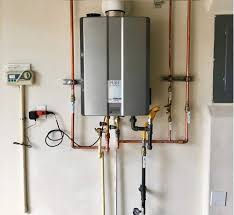
LOWER YOUR WATER HEATING COSTS
- Water heating accounts for about 18% of the energy consumed in your home.
- The Consumer Product Safety Commission recommends setting your water heater at no more than 120 degrees Fahrenheit to prevent scalding. The lower setting will also conserve energy and save money.
- Consider installing an energy efficient tankless water heater.
- Unlike standard units, which continuously heat and reheat water, tankless heaters generate water warm instantly with high-powered gas burners or electric coils.
- Gas-powered tankless water heaters are approximately 22% more efficient when compared to traditional water heaters.
- An advantage of tankless units is their longer lifespan. A standard, high-quality water heater will last roughly a decade, whereas tankless models function for twice as long.





